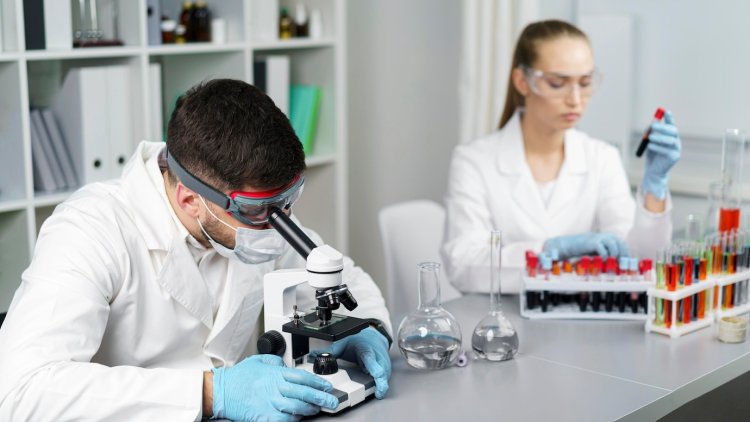How to Begin Your Journey in Phlebotomy Training: A Simple Guide

If you’re someone who dreams of working in healthcare but isn’t sure where to start, phlebotomy training might be the perfect first step. Phlebotomy is the process of drawing blood from patients for medical tests, donations, or research. It’s a career that’s always in demand, and it doesn’t take years of schooling to get started. In this guide, we’ll walk you through what phlebotomy training involves, the importance of learning about antecubital fossa veins, and how phlebotomy courses can open the door to an exciting healthcare career.
What is Phlebotomy?
Phlebotomy is a big word, but it simply means taking blood from a vein. Doctors and nurses use blood samples to find out if someone is healthy or if they have an illness. Phlebotomists are the trained professionals who carefully collect these samples. Without phlebotomists, doctors wouldn’t have the information they need to treat patients properly.
That’s why phlebotomy training is so important. It teaches you how to collect blood safely, how to make patients feel comfortable, and how to handle blood samples correctly.
Why Start with Phlebotomy Training?
Starting your healthcare career with phlebotomy training has lots of benefits:
-
Quick Entry: Many programs can be completed in just a few months.
-
Affordable: Compared to long college degrees, phlebotomy courses are much more budget-friendly.
-
High Demand: Hospitals, clinics, and blood donation centers are always looking for skilled phlebotomists.
-
Room to Grow: Phlebotomy can be a stepping stone to other medical careers, like nursing or lab technology.
At Centauri World, students are prepared with both classroom knowledge and real-world skills to succeed in this exciting field.
Understanding Antecubital Fossa Veins
One of the most important lessons in phlebotomy training is learning about the antecubital fossa veins. But what are these, exactly?
The antecubital fossa is the small, soft area inside your elbow. When you bend your arm, it's the spot where your elbow forms a crease. Underneath this skin are several veins that are perfect for drawing blood because they are close to the surface and easy to find.
Here are the three main antecubital fossa veins you’ll learn about:
-
Median Cubital Vein: This is the most commonly used vein for blood draws. It’s big, close to the skin, and doesn’t move much.
-
Cephalic Vein: This vein is located on the thumb side of the arm. It can be a good second choice if the median cubital vein isn’t available.
-
Basilic Vein: This vein is closer to the body and can be harder to reach. Phlebotomists use it when other veins aren’t accessible.
Knowing where these veins are and how to find them safely is a major part of what you’ll practice during phlebotomy training.
What You Will Learn in Phlebotomy Courses
When you sign up for phlebotomy courses, you’re doing more than just learning how to poke a needle into a vein. A complete course will teach you:
-
How to talk to patients and make them feel at ease
-
How to set up and use phlebotomy tools
-
How to prevent infections
-
How to label and transport blood samples properly
-
How to handle emergencies, like fainting or bleeding
At Centauri World, phlebotomy courses are designed to give you hands-on experience with real patients, not just textbooks. This way, you’ll feel confident and ready to work as soon as you graduate.
How Long Does It Take to Become a Phlebotomist?
The great news is that you don’t have to wait years to start working. Most phlebotomy training programs take just 4 to 8 months to complete. Some schools even offer accelerated phlebotomy courses that you can finish faster if you’re eager to get started.
Once you finish the program, you may need to pass a certification exam, depending on your state’s rules. But don’t worry—your training will fully prepare you for success.
Tips for Choosing the Right Phlebotomy Training
Not all phlebotomy courses are the same. Here are a few tips to help you pick the best one:
-
Look for Accredited Programs: Accredited schools meet high standards and will prepare you well.
-
Check for Hands-On Practice: Make sure you’ll get real experience drawing blood.
-
Read Reviews: Find out what other students say about the program.
-
Ask About Certification Help: Good programs will help you get ready for certification tests.
Choosing a trusted name like Centauri World can give you peace of mind that you’re getting top-quality training.
Conclusion
Starting a career in healthcare doesn’t have to be complicated. With the right phlebotomy training, you can quickly step into an important role that helps people every day. Learning about the antecubital fossa veins and practicing safe techniques are keys to becoming a skilled phlebotomist.
Whether you're looking for a career change or just starting out, phlebotomy courses can open the door to a bright future. Take the first step today and get ready to make a real difference in the world of healthcare!
What's Your Reaction?














.jpg)
.jpg)

